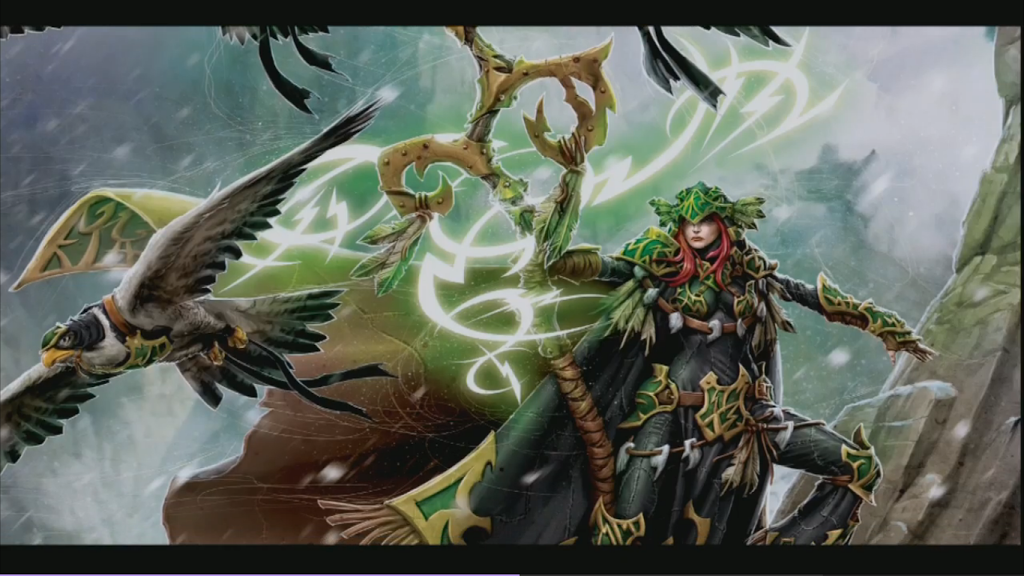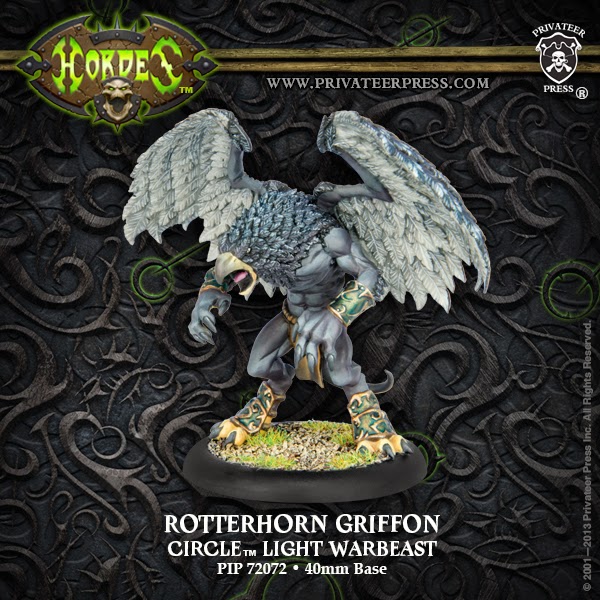Hordes: Rotterhorn Griffin

Earlier this month, Privateer Press released a new light warbeast to the Circle Orboros: the Rotterhorn Griffin. Let us take a look under the hood and see if it’s worthy of our attention.
Jumping right in and starting with the Rotterhorn’s mobility, at SPD 6 with Flight, the Rotterhorn can move around in a hurry, but without Reach, it is not going to have the longest of melee threat ranges. Those melee attacks are a pair of MAT 6, P+S 11 claws with the Open Fist rule, which isn’t terribly impressive either, even with Circle Orboros’s various melee damage buffs like Primal or Forced Evolution. With defensive stats of DEF 14/ARM 15 with 22 damage boxes, it can’t quite take a lot of damage either.
So, looking at the raw stats, it would be easy to dismiss the Rotterhorn pretty much outright, even at its cost of PC 4, but thankfully there is more to it. The special action Shrill Shriek causes all models within 2″ of the Rotterhorn to suffer a POW 8 damage roll. It is not blast or magic damage, just a straight POW 8 requiring no attack roll to hit. This makes the Rotterhorn a pretty solid tool against hordes of enemy infantry, particularly those that might otherwise be immune to blast damage, like Satyxis Raiders with the Sea Witch. Average rolling will net you kills on anything with ARM 14 or lower. Since Shrill Shriek is a special action, it cannot be performed as a part of a charge, so normal rules will limit its threat to a less-than-exciting 8″. You can also artificially extend this threat range by using a single Shifting Stone unit to teleport the Rotterhorn, giving it up to an ≈11.5″ threat with Shrill Shriek.
It is also worth noting that Shrill Shriek can, in fact, be boosted as well, increasing its damage potential quite a bit and giving you a solid way to remove troublesome high-DEF, multi-wound solos or officers that might otherwise be difficult to hit like Eiryss or even low-ARM warcasters or warlocks like Caine or Lylyth. While some might question the ability to boost the damage roll, precedent for not being able to boost has been clearly set with the Flak Field special attack that specifically states as such.
This, however, is where its animus comes in: Acceleration. This cost-2 animus allows a friendly Faction model to perform a special action at the end of its activation. This can allow the Rotterhorn to charge into combat, make its two basic attacks, then perform the Shrill Shriek action afterwards via the animus, effectively giving the Rotterhorn up to an 11″ threat with its POW 8 special action without the aid of Shifting Stones or other mobility boosts like Dog Pile, Warpath, etc. Do be mindful that Acceleration cannot be used after a run, since running immediately ends an activation and preempts you from doing anything afterward.
 |
| Una the Falconer |
 |
| Druid Stoneward and Woldstalkers |
Model-wise, if you’d like to get a good look at its components, check out Ben’s unboxing article from May.





